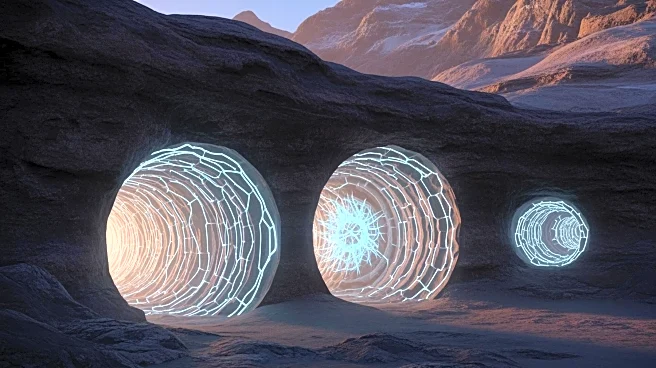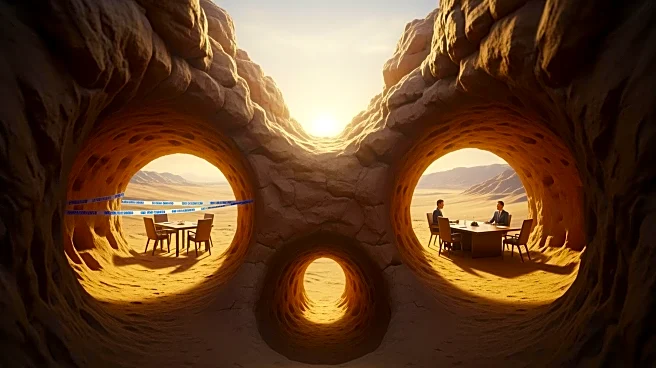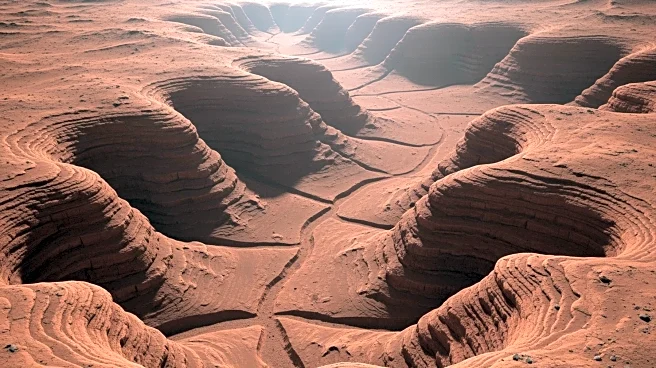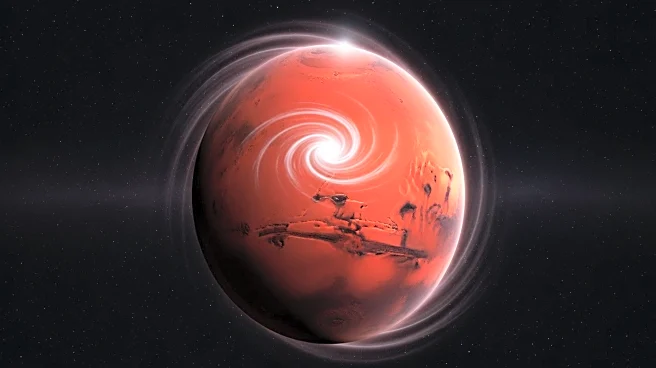What's Happening?
In the deserts of Namibia, Saudi Arabia, and Oman, scientists have discovered intricate tunnels carved into solid rock, believed to be the work of an unknown lifeform. These tunnels, found in ancient marble
and limestone, are no wider than half a millimeter and extend up to three centimeters long. The discovery, initially made by geologist Cees Passchier, has evolved into a significant puzzle for researchers. The tunnels contain biological material, but no recoverable DNA or proteins have been found. The structures are filled with fine calcium-carbonate powder, suggesting a microscopic organism may have created them. This phenomenon has been documented in the Geomicrobiology Journal, highlighting the presence of these tunnels in various locations across the Middle East.
Why It's Important?
This discovery challenges existing notions of where life can exist on Earth. The ability of microorganisms to thrive in such harsh environments as marble and limestone suggests that life can persist in conditions previously thought uninhabitable. This finding has implications for understanding Earth's carbon cycle, as the organisms may have influenced local carbon cycling by mobilizing carbon from the rock. Furthermore, the discovery broadens the scope of what is considered 'habitable,' potentially impacting the search for life on other planets. If life can survive in the extreme conditions of desert rocks, it raises the possibility of life existing in similar environments on Mars or icy moons.
What's Next?
Researchers will continue to investigate the origins and nature of these tunnels to determine the identity of the lifeform responsible. This ongoing research could lead to new insights into Earth's biological history and the potential for life beyond our planet. As scientists explore these micro-burrows, they may uncover more about the role of subterranean microbes in Earth's carbon cycle and their broader ecological impact.
Beyond the Headlines
The discovery of these tunnels not only challenges our understanding of life on Earth but also prompts a reevaluation of the conditions necessary for life to thrive. This could lead to a paradigm shift in astrobiology, influencing future missions to explore extraterrestrial environments. The study of these ancient tunnels may also provide clues about the resilience and adaptability of life, offering lessons for biotechnology and the development of life-support systems in extreme environments.












